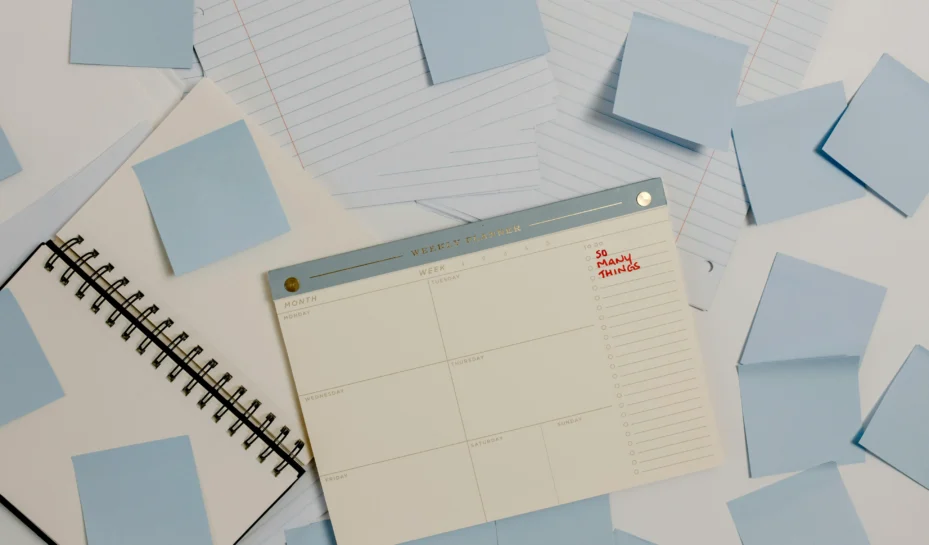Something we have found helpful lately has been keeping a personal (non-work) time sheet or card of our activities. It helped us identify and stay focused on our goals, so we feel the idea may have value to others. Here’s what we decided to do and how it helps.
Setting Up our Goals
To begin with, we got honest about our goals, which was an outcome of reviewing our habits. After some conversations and ideating, we made a list of our 3 to 6-month goals with attainable outcomes. Achievable and actionable goals are key to driving real, attainable outcomes. These items went into a spreadsheet. It wasn’t easy because we had to be honest about trade-offs and priorities.
In that process, we found that there are things we think we want to do and things we will do. Many of us have things we say we want but will never achieve because we cannot take action or are unwilling to suffer for them. We may want to be rock stars or master gardeners, which takes time and energy.
If we pursue those goals, we must trade off other things we want to expend energy on. By focusing on what we wish to in a measurable and actionable way, we make sure we focus our energy on things we won’t simply drop just because something got ‘hard’. Unfortunately, growth isn’t easy, but by focusing on actionable items, you can prove that you are progressing due to your effort.
Buckets of Hours for Balance
We assigned each goal a bucket of hours each week. Those buckets of hours allow us to stay balanced and manage multiple goals simultaneously. We are rarely engaged in one single goal at a time. There will usually be an attempt to attain various goals simultaneously.
Even if you want to be an Olympic athlete, you will not be training every minute of the day. You will also need to build your brand, do interviews, and find a way to earn income later. The sport may be the primary focus, but it can’t always be the only thing you can focus on.
Before the week starts, we put what we will work on on the sheet and tie those items to the larger goals. We then estimate each item to make sure it can make it happen. Further, we make sure the goals are attainable that week. We can’t plant a garden if the weather isn’t expected to cooperate. This work creates an actionable weekly plan with no foreseeable blocking dependencies.
Logging our Time
Every day, we ‘bill’ our time against the tasks we have for that week, just like any other project. We log this for every day we work on one of the tasks. To be realistic, we also bill our daily duties, such as making dinner, doing dishes, or even going to the gym. Let’s face it: those things also take time and limit our capacity for the bigger goals.
As the week goes on, we add notes about wins, losses, and learnings as things progress. These become items to review every Friday to gauge how the week went. Our time logging creates a data-based way of determining how things are proceeding.
If something happens and we can’t get through an item, we want to ensure it doesn’t keep recurring. If it happens repeatedly, it is feedback that it is not actionable or can’t be done right now due to some dependency.
Celebrate the Wins
We have learned that we must also celebrate our wins if something has gone well. If we have made a huge gain or overcome a hurdle, we want to recognize and reward ourselves; otherwise, working towards long-term goals can feel like an overwhelming slog. If you’re going to become a great baker, you want to make sure you recognize when you have made something great so you know how to repeat it.

The point here is that we want to remove the stigma of failure. By documenting learnings, we see how we are growing, while celebrating wins, we see our progress. This helps us through positive reinforcement rather than negative reinforcement, which can lead to cognitive biases like Survivor’s Bias that block our growth.
This approach has made us feel more productive and focused. This isn’t a new concept per se. We do Scrum events in software engineering to help teams build their products. Initially, that is where the idea of our personal time card started, but it is not what it has become.
An Actionable Feedback Loop
Our timecard has become a constant feedback loop that helps us address the question, ‘Am I doing everything possible to achieve what I want and what is truly important to me?’ That question can be tricky to answer when we are the judge and jury looking at our performance. It always feels like more must be done, which isn’t always actionable or possible.
A timesheet that tracks progress toward our personal goals gives us a practical gut check and a way to examine our approach to goals and the trade-offs between them. We have real numbers to look at when we ask ourselves if I am doing enough about <x> or should focus more on <y> this week. It then becomes much more about data than about emotional context or mood.
What, No Example?
No, we are not going to give an example. Why? We don’t want to focus on the tools. You can take notes on a whiteboard, a Google calendar, an Excel spreadsheet, or even sticky notes. The point is that the tools don’t matter, but the process does. All you need to do to succeed is:
- Create a set of actionable goals you want to work towards.
- Create a bucket of hours for each.
- Log your time daily.
- Have a win, a learning, or a failure? Take a note!
- Review once a week to celebrate what got done and learn from what went wrong.
Wrapping Up
We know punching a clock can feel tedious. However, we have found this approach a huge help. While your mileage may vary, it has been beneficial for us in balancing our march toward multiple goals. It has helped us realize where we want to be and, more importantly, how to estimate our progress.
